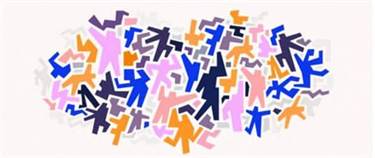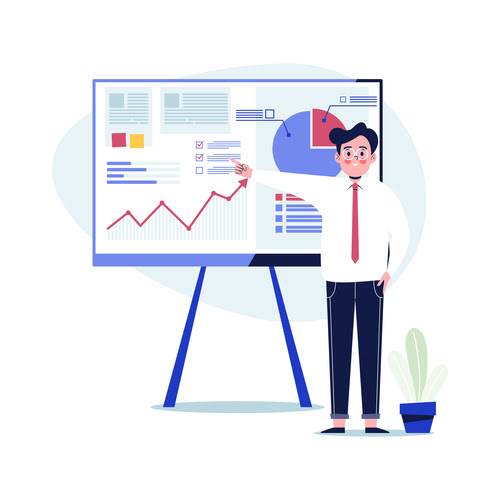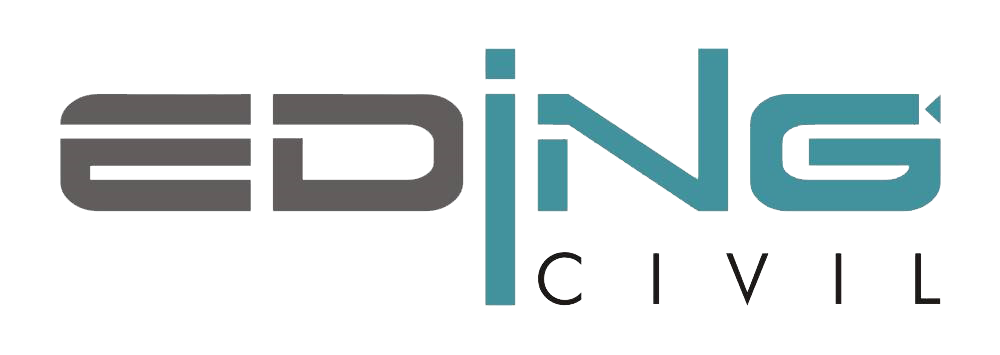Content
StreamsStreams are digital notepads to help you organize projects, share OKRs, and whatever else you dream up. Creating a closing celebration that acknowledges the contributions of individuals and the accomplishments of the team and that formally ends this particular team’s existence. The first version is for teams who want to get to know each other better. The second version is for teams who want to explore how they are working together as a team. Build trust among team members, by advocating honesty, transparency, and accountability. Address and resolve conflicts and problems as soon as they arise.

Team members may feel a variety of concerns about the team’s impending dissolution. They may be feeling some anxiety because of uncertainty about their individual role or future responsibilities. They may feel sadness or a sense of loss about the changes coming to their team relationships. And at the same time, team members may feel a sense of deep satisfaction at the accomplishments of the team.
Mourning Or Adjourning
Arrange at least 1 team-building activity, to help people grow closer as a team. As a natural consequence of it all, your project is bound to progress at a steady rate — mismatched, uncompromising teams can only produce incomplete, confusing projects. Now, if the team members have grown close over time, and grown accustomed to working with each other, they may mourn the fact that it’s now time to move on and work with other people.
This gives them an opportunity to recognize their abilities as well as those of their teammates. Employees rely on each other, collaborate effectively and there’s a more lighthearted feel to the group. This way, they’ll remain high-performing while re-establishing trusted connections. You approach your team to learn about their bottlenecks, roadblocks and concerns.
How Can You Help Your Team Advance In Their Development?
GuidanceGuidance allows admins to suggest talking points for managers to discuss during their 1-on-1s. MeetingsBuild collaborative agendas, record notes and action items in real-time, and never forget what was discussed. To advance from this stage to the next stage, each member must relinquish the comfort zone of non-threatening topics and risk the possibility of conflict.
- All teams must be prepared to go through the difficult and stressful times as well as reaping the benefits of the productive phases.
- As the workload becomes smaller, it’s common for team members to be taken off the assignment and delegated to a new project.
- At this time, he proposed four stages of team development that he believed necessary in order for a team to grow, tackle problems, find solutions, and deliver results.
- Team members feel an increasing acceptance of others on the team, recognizing that the variety of opinions and experiences makes the team stronger and its product richer.
- With WorkPatterns, you can guide team development remotely with intentional goal setting, online collaboration, and continuous feedback.
As you repeat this exercise over time, it’ll become higher fidelity and help your team see they’re making progress. Recently, several teams in our engineering department undertook a massive, ludicrously complex, business-critical infrastructure project. The number of risks and dependencies sent these established and cohesive dev teams into a flurry of (ultimately, unproductive and/or counter-productive) activity. If your team has ever thrashed about like this, then you know what “storming” is.
Find Time To Reflect And Collect Learning Points
A team sponsor is a person who provides the team with the goal and the resources needed to accomplish that goal. Workgroups become a cohesive team when they learn to appreciate differences. Try the tool that helps teams around the world stay connected, productive, and inspired. The best thing a leader can do here is to empower team members to get everything they need to be the most productive and innovative as possible. This is to say that, even when things aren’t going smoothly, each person should assume that their “challenger” is coming from a good place and is trying to act in the best interest of the team. Each team member should also try to analyze their reason for inciting potential conflict from the other person’s point of view.
At first, people are led by their natural desire to be liked by others and accepted among their peers. After all, when you have to cooperate with someone for a longer period, it’s easier to do it if you get along well. That’s part of the reason HR departments task their job candidates with personality tests — to see whether they’d be adequate in terms of behavior and values. Now, these 5 stages are vital to help you anticipate your team effectiveness, i.e. your ability to be efficient and productive with your work, both as individuals and as a group. In 1975, Tuckman reviewed his model of team development and added one more stage.

In addition to keeping communication flowing, it’s also extremely helpful to ensure that everyone knows what part of the project they are responsible for. This can reduce misunderstandings and help work to progress smoothly. A good way to get any project started is with a kick off meeting. This gives everyone a chance to introduce themselves and establish roles and responsibilities that will help move the project along with ease. In this article, we’ll take a look at each stage in more detail to help you implement them and improve team development in your business. This Tuckman’s Team and Group Model just says these are phases a team tends to cycle through.
It also precipitates team learning, which is the process of gathering, discussing, and rolling out the strategies for team success. Team learning can happen through group initiatives, innovative leadership, and training and is essential in ensuring healthy team development. The norming stage is when the entire team starts to work as a cohesive unit.
Key Actions To Support Adjourning
Many situations do not have immediate answers or clear resolutions. Recognizing these situations and responding with empathy can improve the “cultural climate” and build trust among group members. HSR helps individuals learn to respond in ways https://globalcloudteam.com/ that do not overpromise or overcontrol. It helps members of a group notice unwanted patterns and work together on shifting to more productive interactions. Participants experience the practice of more compassion and the benefits it engenders.
During the Norming stage of team development, team members begin to resolve the discrepancy they felt between their individual expectations and the reality of the team’s experience. If the team is successful in setting more flexible and inclusive norms and expectations, members should experience an increased sense of comfort in expressing their “real” ideas and feelings. Team members feel an increasing acceptance of others on the team, recognizing that the variety of opinions and experiences makes the team stronger and its product richer. Members start to feel part of a team and can take pleasure from the increased group cohesion.
To get there, learning more about team-management skills and the stages of group development is the way to go. At the Performing stage, managers should keep encouraging team decision-making and problem solving as the team members have the knowledge, experience, and trust in each other. Team progress according to Bruce Tuckman passes through the stages shown in the diagram below. Most high performing teams go through these five stages of team development. When your team has grown through the stages of team development they establish a state of “flow”.
How can we prioritize our personal lives while excelling in our careers? Here’s where we explore the emerging conversations about Work 2.0. When one person fails to complete a task, the rest of the group suffers. Tell teams what they are doing right as well as what they need to improve. Early on, create an environment that is open and non-judgmental.

A continuous improvement mindset is the enemy of the status quo. Providing consistent feedback prevents team stagnation because everyone is always striving to do and be better. The fifth and final stage of team development is Adjourning. This step was added to the existing model of group four stages of team development development by Tuckman in 1977. Having fun together can be an often overlooked element of team development. Seeing your colleagues as more than their job roles is something that should happen in the early stages of the Forming process but it’s important to keep engaging these muscles.
This is also the stage in which group members test boundaries, create ground rules, and define organizational standards. Discussion centers on defining the scope of the task, how to approach it, and similar concerns. To grow from this stage to the next, each member must relinquish the comfort of non-threatening topics and risk the possibility of conflict. It involves a challenging yet critical transition from the laid-back forming stage. There’s a possibility of failure at the storming stage because it’s here that conflicts start to manifest.
Reasons Why Team Building Is Important For Remote And Hybrid Teams
Even the most high-performing teams will revert to earlier stages in certain circumstances. Many long-standing teams go through these cycles many times as they react to changing circumstances. For example, a change in leadership may cause the team to revert to storming as the new people challenge the existing norms and dynamics of the team. Renowned psychologist Bruce Tuckman created an easily-understood model in 1965. It illustrates how teams in different fields undergo five similar stages of group development.
With Toggl Track, team members can track the work that they do. This is especially useful if you have some people that are working remotely. But, you can point out areas of improvement or strengths to the group as a whole, without pointing fingers. End each meeting with insightful and constructive feedback that improves the group process.
What Is The Most Important Stage Of Team Development?
In the norming stage, consensus develops around who the leader or leaders are, and individual member’s roles. Interpersonal differences begin to be resolved, and a sense of cohesion and unity emerges. Team performance increases during this stage as members learn to cooperate and begin to focus on team goals.
Performing – when the team starts to produce through effective and efficient working practices. I use Bus Trip at the end of a training session or a meeting, and I use it all the time. The game creates a massive amount of energy with lots of smiles, laughs, and sometimes even a teardrop or two.
Borrow insights from this teamwork theory, and you might finally understand how your team can push past average and unlock a higher level of productivity together. This is the point where the project comes to an end and the team separates and goes their separate ways. Some team members may find this hard because they liked the routine of the group, have made close friendships or if the future, after leaving this team, looks bleak and unpromising. Managers need to recognise each achievement the team makes at this stage, no matter how small or large. The team must know that despite all difficulties, they are still delivering and making progress.
